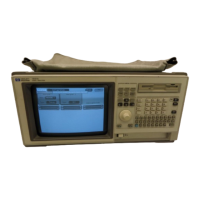Time BaseTime Base The time base provides the sample clocks and timing necessary for data
acquisition. It consists of the 100 MHz reference oscillator and time base hybrid.
The 100 MHz reference oscillator provides the base sample frequency.
The time base hybrid has programmable dividers to provide the rest of the sample
frequencies appropriate for the time range selected. The time base uses the time-stretched
output of t he fine int erpolator to time-reference the sampling to t he trigger point. The time
base has counters to control how much data is taken before ( pre-trigger data) and after
( post-trigger data) the trigger event. After the desired number of pre-trigger samples has
occurred, t he Time base hybrid sends a signal to the Logic Trigger ( trigger arm) indicating it
is ready for t he trigger event. When the trigger condition is satisfied, the Logic Trigger sends
a signal back to the t ime base hybrid. The time base hybrid then starts the post-trigger delay
counter.
When the countdown reaches zero, the sample clocks are stopped and the CPU is signaled
that the acquisition is complete. The Fine Interpolator is a dual-slope integrator that acts as
a time-interval stretcher. When the logic trigger receives a signal t hat meet s the
programmed triggering requirement s, it signals the time base. The time base then sends a
pulse to the fine interpolator. The pulse is equal in width to the t ime bet ween the trigger and
the next sample clock. The fine interpolator stretches this time by a factor of approximately
500. Meanwhile, the time base hybrid runs a counter with a clock derived from the sample
rate oscillator. When the interpolator indicates the stretch is complete, the counter is
stopped. The count represents, with much higher accuracy, the t ime bet ween the t rigger
and the first sample clock. The count is stored and used to place the recently acquired data
in relationship with previous data.
AC CalAC Cal The AC Cal is a multiplexer circuit that can provide several signals to the Probe
Compensation/AC Calibrator output on the rear panel. The signal provided depends on
the mode of the instrument. It can be either a probe compensation signal, a pulse
representing the trigger event , signals used for self-calibration, or t he 100 MHz reference
oscillator when sample period is 1 ns.
DC CalDC Cal The DC Cal output, a rear panel signal, is used for self-calibration. It is one
output from the 16-channel DAC.
Digital InterfaceDigital Interface The Digital Interface provides control and interface between the
system control and digital functions in the acquisition circuitry.
Analog I nt erfaceAnal og I nt erface The Analog Interface provides control of analog functions in the
acquisition circuitry. It is primarily a 16-channel DAC with an accurate reference and
filt ers on the out puts. It controls channel offsets and t rigger levels, and provides the DC
Cal output.
Theory of Operation
The Oscilloscope Board
8–11

